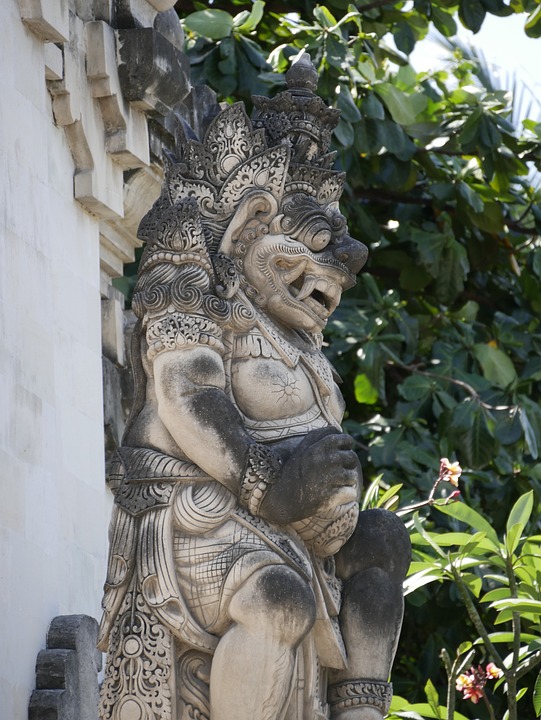Bali, an enchanting Indonesian island known for its picturesque landscapes and warm hospitality, is also celebrated for its rich cultural heritage. Among its most notable features are the numerous temples, referred to as “pura” in the local language, which encapsulate the island’s spiritual essence. Understanding these cultural wonders and the traditions associated with them can significantly enrich your travel experience. Here, we explore some of the essential temples and traditions that you simply cannot miss on your journey through Bali.
The island is home to over 20,000 temples, each offering a unique glimpse into the Balinese way of life, showcasing an intricate blend of Hindu beliefs, local customs, and artistry. One of the most renowned temples is Pura Uluwatu. Perched on a steep cliff overlooking the Indian Ocean, this temple not only provides breathtaking views but is also an iconic representation of Balinese architecture. Visitors flock to Uluwatu for its spiritual significance and to witness the mesmerizing Kecak dance performance that unfolds against the backdrop of a fiery sunset. The temple is dedicated to the spirits of ancestors and serves as a place for practitioners to pray and engage in ceremonies.
Another must-visit site is Pura Besakih, regarded as the “Mother Temple” of Bali. Nestled on the slopes of Mount Agung, this temple complex is the largest and holiest on the island, consisting of over 80 individual temples. The breathtaking panorama from this sacred site is complemented by the rich history that has shaped Balinese culture. Annual ceremonies at Besakih attract thousands of worshippers, making it a focal point of spiritual life in Bali. The architecture reflects the traditional Balinese style, with elaborate carvings and ornate decorations that speak volumes about the devotion of the island’s people.
A visit to Bali would be incomplete without exploring Tanah Lot, a temple that dramatically sits atop a rocky outcrop, surrounded by crashing waves. Renowned for its sunset views, this temple holds a significant place in local folklore, believed to be guarded by sea snakes that protect it from evil spirits. Tanah Lot is not just a picturesque destination; it is also a site for traditional rituals and offerings, allowing visitors to witness the devotion of the Balinese people firsthand.
While exploring these temples, it is essential to understand the cultural traditions that accompany them. Offerings, known as “canang sari,” are a vital aspect of daily life in Bali. These small baskets made of palm leaves are filled with flowers, rice, and incense, symbolizing gratitude and respect to the gods. You will notice canang sari adorning temple altars, shops, and pathways, reflecting the unwavering spiritual connection the Balinese maintain with their deities.
Another prominent tradition is the Balinese New Year, celebrated as “Nyepi.” This day of silence, fasting, and meditation is marked by self-reflection and spiritual renewal. The day before Nyepi, the island witnesses the lively processions of Ogoh-Ogoh, massive demon effigies made from bamboo and paper. These creations are paraded through the streets and subsequently set ablaze, symbolizing the purging of evil spirits. This event not only showcases the artistic talents of the local community but also reinforces the importance of communal participation in preserving Bali’s rich cultural traditions.
Ceremonies play a central role in Balinese life. Notably, the “ngaben” or cremation ceremony is a significant event that reflects the island’s beliefs regarding life, death, and the afterlife. This elaborate ritual involves colorful processions and a celebration of life, emphasizing the belief that death is a transition rather than an end. Witnessing such customs provides deeper insights into the spiritual values that shape Balinese culture.
In addition to temples and ceremonies, the artistry of Bali can be found in its traditional crafts, such as batik textiles and intricate wood carvings. These crafts reflect the island’s heritage and are often associated with temple rituals, making them an important part of Bali’s cultural identity.
In conclusion, exploring the cultural wonders of Bali through its temples and traditions offers travelers an invaluable opportunity to experience the island’s profound spirituality and rich heritage. From the stunning architecture of Uluwatu and Besakih to the vibrant celebrations of Nyepi and ngaben, each aspect enhances an appreciation of Bali’s unique way of life. Whether you are a culture enthusiast or merely seeking a deeper understanding of this magical island, the temples and traditions of Bali are truly experiences you cannot afford to miss.
